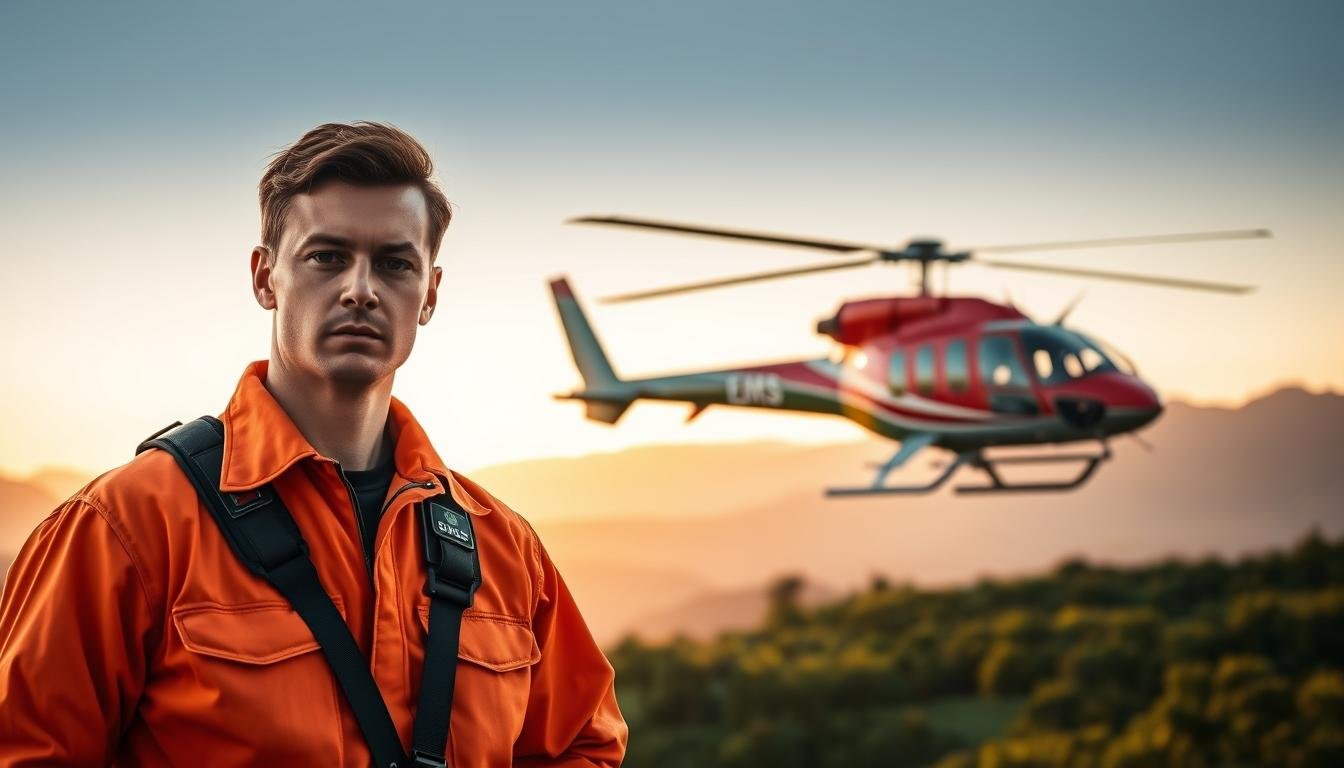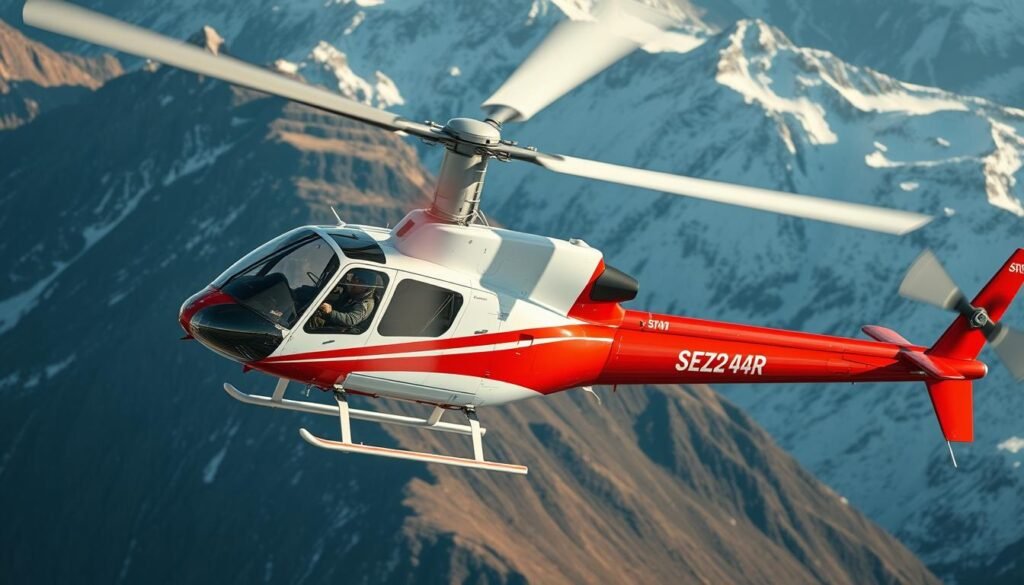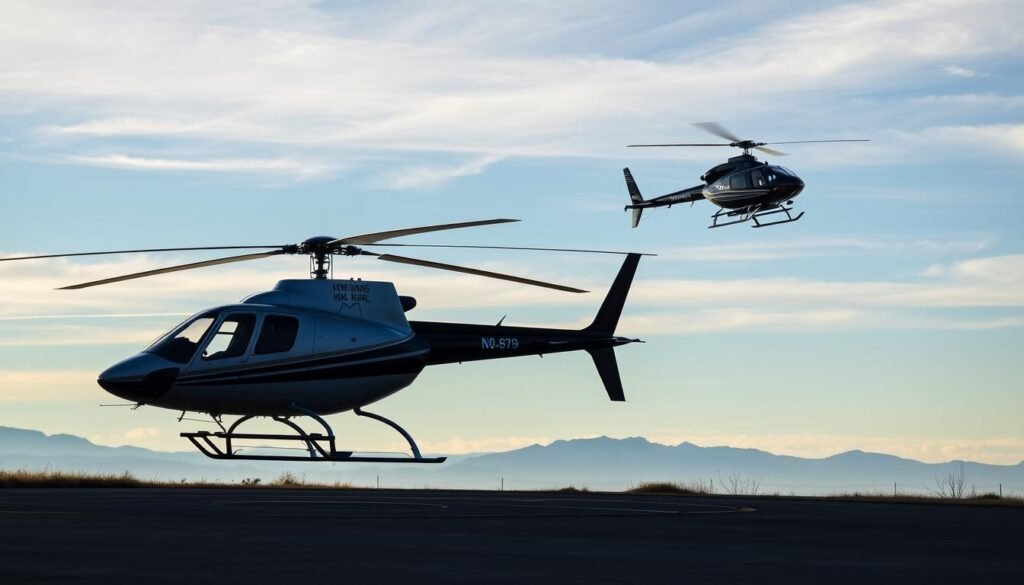Surprising fact: Many helicopter flight instructor candidates reach initial hiring minimums in as little as three years, yet building the required turbine time and instrument experience often extends the path for most.
The guide maps a clear path from instructor work into air ambulance operations. It explains required certificates, turbine time, and the medical checks that employers expect.
Practical steps cover commercial certification, an instrument rating, and FAA medical clearance. It shows how disciplined hour building and targeted aircraft experience speed advancement.
The role demands preflight checks, weight-and-balance planning, regulatory compliance, and steady judgment under pressure. Readers will see why a commercial pathway and documented turbine hours matter for operational readiness.

For a deeper look at certification and timelines, explore an operational guide on how to become an ems helicopter pilot here. For market pay and experience benchmarks, see typical salary and hour expectations here.
Key Takeaways
- Core certificates: Commercial certificate, instrument rating, and FAA medical are essential.
- Time building: Instructor work helps accumulate hours and hone procedures.
- Turbine experience: Critical for air ambulance hiring and mission readiness.
- Operational duties: Preflight, weight-and-balance, and safety under tight schedules.
- Career horizon: One to five years typical; continuous learning opens management roles.
Understanding The EMS Helicopter Pilot Role In The United States
This role demands split-second judgment while positioning an air ambulance for time-critical patient transport. The position blends precise aircraft control with clinical priorities and strict risk management. It requires consistent regulatory compliance and checklist discipline.
What An EMS Helicopter Pilot Does In Emergency Medical Services
What An EMS Helicopter Pilot Does In Emergency Medical Services
An ems helicopter pilot manages preflight checks, weight-and-balance calculations, and fuel planning before every sortie. They ensure the aircraft meets load limits and environmental performance needs.
They perform arrivals and departures at scenes, hospital pads, and rooftops. Coordination with flight nurses and paramedics is continuous from brief to patient handoff.
How Air Ambulance Operations Integrate With Medical Crews
How Air Ambulance Operations Integrate With Medical Crews
Pilots maintain clear phraseology and strong crew resource management during high-pressure situations. They make real-time decisions when weather or conditions change and choose safe alternates that protect crew and patient.
Physical readiness is important because the job includes irregular hours and night missions. For a deeper look at operational challenges, see challenges faced by pilots in emergency.
Step-By-Step Path Becoming An EMS Helicopter Pilot
A staged plan—starting with medical approval and finishing with turbine experience—keeps training focused and efficient. This sequence helps applicants meet common hiring standards and build operational readiness.
Pass The FAA Medical Examination (First Or Second Class)
Start with medical clearance. An Aviation Medical Examiner checks vision, hearing, and cardiovascular health. First- or second-class certificates are typical for commercial operations, and renewal intervals vary by age.
Earn A Private Pilot Certificate For Helicopters
FAA minima under Part 141 list 35 hours, but most trainees log 50–60 hours before passing written and practical exams. Plan for dual instruction, solo time, and cross-country legs.
Add The Helicopter Instrument Rating For IFR And Low-Visibility Flight
The instrument rating enables operation in marginal conditions. It requires specific instrument hours plus knowledge and practical tests. Mastering holds, approaches, and cockpit instrument work is essential for emergency missions.
Obtain The Commercial Pilot Certificate (Part 61/Part 141)
Commercial standards include advanced maneuvers, night and cross-country requirements, and emergency procedures. Part 141 tracks often require roughly 115 hours total; Part 61 paths vary but cover the same competencies.
Build Turbine Time In Helicopters Used For EMS Missions
Target turbine experience by seeking roles in tours, utility work, ENG, or other commercial ops that use turbine platforms. Keep disciplined logbook habits and pursue mentors and structured syllabi to speed hiring readiness.
- Sequence: medical, private, instrument, commercial, turbine time.
- Emphasize cross-country, night, and confined-area practice.
- Maintain currency with recurrent, scenario-based training.
For a practical checklist and career planning tips, consult this EMS career guide.

From Flight Instructor To Air Ambulance: Building Hours And Experience
Working as a certified trainer offers a fast, practical route to build meaningful hours and sharpen real-world techniques. This path blends structured syllabi with varied missions that mirror emergency operations.
Use CFI Work To Accumulate Quality Flight Time And Refine Skills
Use CFI Work To Accumulate Quality Flight Time And Refine Skills
They leverage teaching roles to strengthen fundamentals while practicing emergency procedures and advanced cockpit discipline. Regular debriefs and syllabus milestones turn ordinary sorties into focused training sessions.
Target Cross-Country, Night, And Confined-Area Experience
Schedule cross-country legs across varied terrain and weather systems to build navigation and operational knowledge. Add night work and confined-area practice so steep approaches and power management become routine.
- Practice real-time risk assessment, communication, and decision-making during instruction.
- Seek turbine-hour opportunities in tours or utility ops for systems and performance exposure.
- Use simulators for IFR procedures, instrument approaches, and abnormal scenarios.
| Focus Area | Goal | How |
|---|---|---|
| Cross-Country | Navigation breadth | Planned diverse routing and weather exposure |
| Night | Visual-illusion control | Structured night lessons and instrument cross-check |
| Confined Areas | Scene landing readiness | Steep approaches and performance planning practice |
| Turbine Roadmap | Hireable experience | Network into tours, ENG, or utility operations |

Document and debrief every notable lesson so recorded growth proves valuable when applying for becoming ems helicopter roles. Treat each hour as an investment in professional readiness.
Helicopter Flight Instructor to EMS Pilot: Skills, Requirements, And Hiring Minimums
Top applicants combine documented experience, up-to-date certifications, and calm problem-solving in complex scenes.
Flight Hours, Turbine Time, And Recency Of Experience
Hiring minimums usually emphasize total rotorcraft hours and documented turbine time in type. Operators want recent night and cross-country experience to verify operational readiness.
Many teams set explicit recency windows for instrument approaches and single-pilot operations. Candidates should log scenario-based sorties and maintain clear, audited logbook entries.
Commercial Pilot Certificate, Instrument Rating, And FAA Medical
Core credentials include a Commercial Pilot Certificate and a helicopter instrument rating. Employers expect at least a current second-class FAA medical; some prefer first-class.
Applicants should show organized copies of certificates and recurrent training records. For formal commercial pathways, see a dedicated guide on the commercial pilot license.
Decision-Making, Crew Coordination, And Communication Under Pressure
Operators evaluate decision-making through scenario interviews and practical check rides. Assessments focus on weather, fuel planning, and strict go/no-go discipline.
Crew resource management is critical. Clear briefings, sterile cockpit habits, and task-saturation controls are non-negotiable in medical operations.

Continuous Learning, Technology Adoption, And Leadership Opportunities
Continuous learning covers advanced avionics, HTAWS, NVG operations, and data-driven safety programs. Embracing these tools improves dispatch reliability and risk management.
Leadership paths include training captain, safety officer, and assistant chief pilot roles. Hiring teams value documented lessons learned and a strong debrief culture.
| Requirement | Typical Minimum | Why It Matters |
|---|---|---|
| Total Rotorcraft Hours | 500–1,500 hrs | Shows broad operational exposure and decision history |
| Turbine Time In Type | 100–300 hrs | Demonstrates systems knowledge and mission readiness |
| Instrument Proficiency | Current approaches and holds | Needed for marginal conditions and single-pilot IFR |
| FAA Medical | Current 1st or 2nd class | Required for commercial hiring standards |
Final note: A deliberate career path that aligns certifications, recency, and technology adoption signals commitment to the air medical industry and boosts hiring prospects. For comparisons on training programs and costs, review pilot training comparisons here.
Real-World EMS Operations, Schedules, And Challenges
Real operations in air medical services demand constant readiness, quick decisions, and strong teamwork.
Shift Work, Standby, And On-Call Life In Air Medical Services
Samantha Poirier, Lead Pilot at REACH Air Medical in Loveland, Colorado, flies 12-hour shifts on a seven-on schedule. Crews remain on standby at a rooftop hospital pad and respond when dispatch tones arrive, sometimes in the middle of the night.
Standby life means rapid transition from rest to full mission mode. Teams run focused preflight checks and quick risk assessments so they can launch in minutes while keeping procedures tight.
Mountain And High-Density-Altitude Operations In Changing Conditions
Mountain operations in the Rockies create high-density-altitude challenges. Hot summer conditions reduce power margins and force careful payload and landing-site decisions.
Pilots must update performance numbers constantly and plan conservative margins for climbs and confined-area work.
Weather, Rooftop Bases, And Risk Management In Single-Pilot IFR/VFR
Rooftop bases expose aircraft to fast-changing weather. Without on-site hangars, crews plan to protect assets while remaining mission-ready.
Single-pilot IFR/VFR operations increase workload. Disciplined instrument cross-checks, stabilized approach criteria, and NVG procedures help manage that risk.
Preflight, Performance Planning, And Weight-And-Balance For Missions
Preflight rigor includes weight-and-balance, power checks, and landing-zone contingencies. Pilots recalc performance as mission variables change.
Wellness, Fatigue Management, And Crew Support After Tough Calls
Crew wellness practices—sleep, nutrition, exercise, and debriefs—sustain resilience after difficult missions. Teams often share a meal after a hard shift as part of recovery and bonding.
Overtime varies seasonally, and career paths can include roles like Assistant Chief Pilot and training lead.

| Area | Typical Challenge | Operational Response |
|---|---|---|
| Shift Schedule | Rapid turn-ups at night | Standardized quick-start checklists and rest protocols |
| Mountain Ops | High density altitude | Conservative weight limits and performance planning |
| Rooftop Bases | Weather exposure | Advance protective measures and alternate basing |
| Single-Pilot Ops | Increased workload | Strict instrument discipline and CRM with medical crew |
For applicants, demonstrated navigation, instrument rating currency, and practical experience in emergency medical services improve hiring prospects. For a focused career resource, review this guide on becoming an ems helicopter pilot.
Final Thoughts
Practical experience in night, confined-area, and cross-country work accelerates readiness for emergency operations. The clear path begins with FAA medical clearance, followed by private and commercial certificates, an instrument rating, and structured turbine hours. Each step builds usable skills and verified experience for an ems career.
Candidates who focus on disciplined procedures, instrument proficiency, and steady hour building position themselves for competitive hiring. Timelines vary; many see measurable progress in one to several years. Continuous learning, new avionics, and mentorship open leadership roles and add long-term rewards for helicopter pilots and their teams.
FAQ
What steps are required to move from a helicopter flight instructor role into air medical pilot work?
The path starts with meeting FAA medical standards, earning a private rotorcraft certificate, then the instrument rating for helicopters. Next comes the commercial certificate under Part 61 or Part 141, followed by focused turbine time in rotorcraft typically used in air ambulance operations. Instructors should log cross-country, night, confined-area, and crew coordination experience. Employers also look for decision-making under pressure, recency of experience, and evidence of continuous training in emergency procedures and avionics.
Which FAA medical class is acceptable for air medical pilot duties?
Most air medical employers require at least a second-class medical for commercial operations; some prefer a first-class for specific roles or airline transfer potential. Candidates must maintain currency and meet vision, cardiovascular, and general health standards. Regular re-examinations and prompt reporting of any medical changes are essential for ongoing eligibility.
How important is an instrument rating for single-pilot air ambulance missions?
An instrument rating is critical. It enables safe IFR operations in low-visibility or changing weather and is often a hiring minimum. Single-pilot IFR demands strong instrument proficiency, reliable avionics knowledge, and strict adherence to procedures to reduce risk during en route segments and approaches to unimproved or rooftop landing sites.
What kind of turbine time do employers prefer for EMS operations?
Employers typically seek turbine experience in helicopters commonly used for medical transport—airframes like the Airbus H135/H145, Bell 429, or Leonardo AW109 are examples. Preferred candidates have multi-engine turbine hours, turbine transition training, and evidence of safe operations in high-density-altitude, mountain, and rooftop environments.
Can time working as a flight instructor count toward the hours needed for commercial certification and hiring?
Yes. Instructor work provides legal flight time credit toward commercial and ATP requirements, while offering valuable teaching, multi-scenario practice, and command experience. It also helps refine judgment, risk assessment, and crew communication—skills directly relevant to medical missions.
What minimum flight hours and recency do most air medical programs require?
Requirements vary, but many programs set minimums like 500–1,000 total helicopter hours and several hundred turbine hours. Recency clauses often require recent night, instrument, and rooftop or confined-area experience. Agencies list specific thresholds for command PIC time and operational environments in hiring ads.
How should a candidate prepare for the operational challenges of rooftop and confined-area landings?
Training should include confined-area procedures, slope and wind assessment, power management, and simulated rooftop approaches. Practicing steep approaches, spot landings, and use of rescue hoists or patient-loading procedures in realistic scenarios builds competency. Mentored flights with experienced EMS pilots accelerate readiness.
What nontechnical skills matter most in air medical operations?
Decision-making under pressure, crew coordination, assertive communication, and situational awareness are vital. Leadership during patient transfers, collaboration with flight nurses and paramedics, and adherence to sterile safety practices also influence mission success. Continuous learning and technology adoption further distinguish strong candidates.
How do weather and high-altitude conditions affect mission planning and safety?
Weather and density altitude directly impact performance, climb capability, and weight-and-balance calculations. Pilots must perform conservative preflight planning, account for deteriorating conditions, and understand mountain rotor and wind shear. Many programs enforce go/no-go criteria and have dispatch support to mitigate risk.
What does duty schedule look like for air medical crewmembers?
Schedules vary: some operate 24/7 shifts with on-call standby, others run set rotations. Expect irregular hours, night missions, and sudden callouts. Teams use structured rest policies, fatigue management programs, and peer support to maintain readiness and wellness after demanding calls.
How can a candidate demonstrate continuous learning and readiness for advanced avionics and safety systems?
Maintain recurrent training on glass cockpits, autopilot systems, terrain awareness, and flight data monitoring. Obtain manufacturer transition courses, scenario-based CRM training, and safety management system participation. Documenting formal training and positive safety culture involvement strengthens applications.
Are there certifications or endorsements beyond the commercial certificate that improve hiring odds?
Yes. An instrument rating, IFR competencies, type ratings or make/model endorsements for specific turbine helicopters, and an ATP certificate (where applicable) increase competitiveness. First-aid or medical crew training and experience working with EMS teams add practical value.
What role does weight-and-balance and performance planning play in medical missions?
Accurate weight-and-balance and performance calculations determine safe payload, fuel choices, and landing-site feasibility. Pilots must account for patient and medical equipment mass, altitudes, temperatures, and confined landing zones to ensure safe margins during critical phases of flight.
How should a flight instructor pivot their resume and experience to target air ambulance employers?
Emphasize turbine transition experience, night and instrument currency, confined-area training, and any rooftop or mountain operations. Highlight decision-making examples, crew coordination, and safety initiatives. Include hours breakdown, types of aircraft flown, and formal training certificates to match employer checklists.
What wellness and fatigue-management practices do reputable air medical operators enforce?
Leading programs implement duty-hour limits, mandatory rest periods, fatigue risk management training, and peer support or counseling after traumatic missions. They promote nutrition, sleep hygiene, and fitness standards to sustain performance across demanding schedules.



